How to Create Content for the Evaluation Stage

How to Create Content for the Evaluation Stage
65% of B2B marketers are challenged when creating effective mid-funnel content. Here are four tips for creating an effective content marketing strategy for the evaluation stage.
If you struggle to understand the middle of the marketing funnel, you’re not alone. Recent research shows that 65% of B2B marketers find it challenging to understand which content is effective in the evaluation stage. This the least understood part of the customer journey, as the path to purchase is less linear and includes more touch points than ever.
The middle-funnel is also called the evaluation or consideration phase. Following the initial research phase, potential buyers assess whether your brand is a good fit.
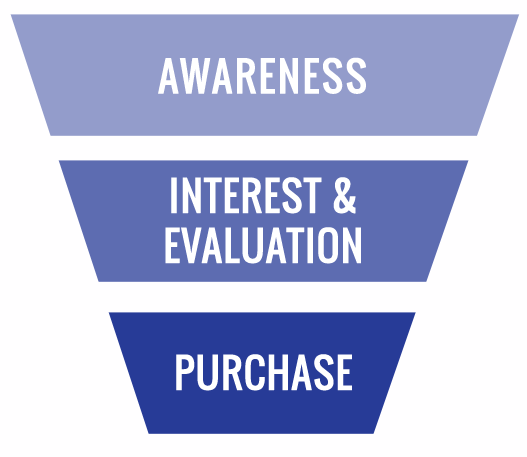
Design your mid-funnel (MOFU) content to nurture these qualified leads to a sales conversion. Your detailed resources must provide shoppers with answers, as well as differentiate your brand from the competition. The best mid-funnel content will seem intuitive to your audience, offer specifics without confusing jargon, and strengthen the customer relationship with your best leads.
Here are four tips for crafting an effective content marketing strategy for the evaluation stage:
- Display your expertise
- Nurture with email marketing
- Use calls to action
- Leverage mid-funnel SEO
1. Display Your Expertise
During the evaluation stage, people are deciding whether your brand is a trustworthy solution. Use MOFU content to establish yourself as an experienced leader in your industry.
Including credible data and links to reputable industry sources will help position your brand as knowledgeable. You could also sponsor your own research. This is a powerful way to demonstrate thought leadership and develop gravitas for your business.
As this chart from Demand Gen’s 2018 Content Preference Report shows, B2B buyers increasingly favor 3rd-party sources of information:
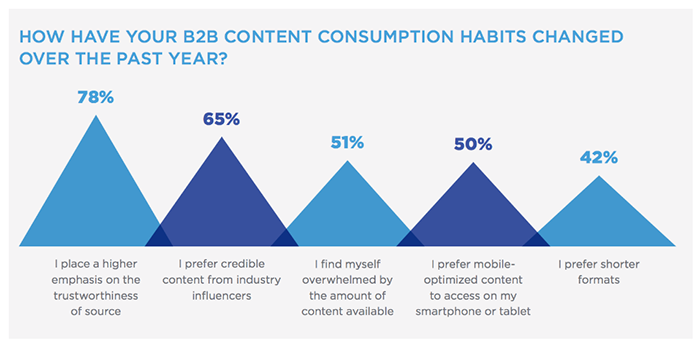
You can also use mid-funnel channels like affiliate content networks, influencers, and guest blogging. Showcasing your content on external platforms will both validate your credibility and expand your reach.
As reported by Demand Gen, the most trusted sources of content for B2B buyers are:
- Case studies (79%)
- Webinars (66%)
- Video (49%)
Regardless of your marketing mix, your content should confirm your brand as the decisive choice for your target audience.
2. Nurture with Email Marketing
MOFU content is most effective when targeted.
Email marketing gives you direct access to your audience’s inbox while allowing you to leverage existing customer data. The result is precise and impactful messaging that’s personalized to each customer segment. According to MailChimp, segmented email campaigns get 14.31% more opens and 100% more clicks than non-segmented campaigns.
Every mid-funnel lead wants more detailed information. Capitalize on this by sending out top-performing blogs, newsletters, invitations to webinars, or a free ebook. For best effect, create a resource that’s targeted to each user segment, based on their engagement history. This will resolve any outstanding questions in a relevant way while coaxing a purchase.
In the following example, Skillshare pulls from previous user interactions to recommend a variety of new classes.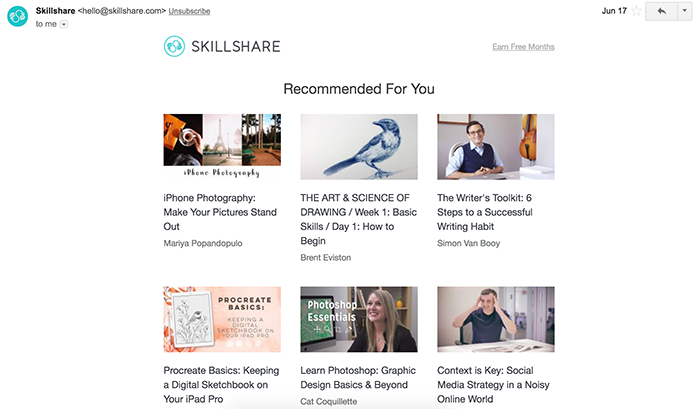
The middle of the funnel can feel murky, but providing options can spark engagement with unresponsive users. Since each interaction is tracked, this wide-angle approach to email marketing lets you identify what content is working – and with whom. You can then adjust your content to nurture these specific leads.
3. Use Calls to Action
In the evaluation stage, high-level content like blogs and case studies serve two purposes. First, these resources let you provide value to users while illustrating how you can help. Second, calls to action (CTAs) attached to this content let you pinpoint qualified leads and pull them to the next stage.
Each piece of content in your mid-funnel should finish with a strong CTA. Guiding them into the next meaningful interaction will sustain their forward momentum. This is important because people who stagnate in the funnel are more easily distracted by other brands.
The challenge here is to predict what that next piece of content should be. A good way to connect the dots between the evaluation and sales stages is to you reverse engineer your touchpoints.
The sales stage relies on technical details and direct communication, so ask yourself – what piece of content should directly precede this? And what content could lead into that? Planning out your CTAs is a helpful exercise because it helps you visualize the way toward a sale.
In the below example, we see Kapost conclude a blog post with a CTA for its sponsored research. The content management service offers a resource that only serious leads will consider because the data and benchmarking points directly to their value proposition.
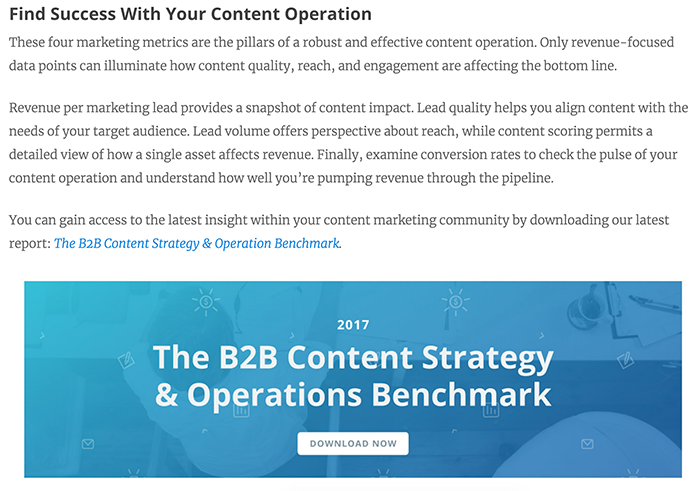
Placing both a hyperlink and an image box helps the brand maximize its chances of converting to the next touchpoint. CTAs are the segues between content, so they must be sizable, prominent, and enticing to effectively guide leads through the funnel.
Learn how to start a business blog.
4. Leverage Mid-Funnel SEO
As consumers seek out the perfect fit, their search language changes. Including the right SEO keywords in your mid-funnel content will help you to achieve visibility and resonance with customers.
Say you’re selling LED light strips. Search terms for the awareness stage would be “how to install LED light strips” or “LED light strips for home.” For the evaluation stage, this language would narrow to phrases like “best LED light strips” or “LED light strips near me.”
Whether you’re using paid or organic SEO strategies, the less generic search terms are less competitive than others. This presents an opportunity for brands that align their SEO strategies with their mid-funnel content strategies. According to a recent survey, only 34% of small businesses invest in SEO.
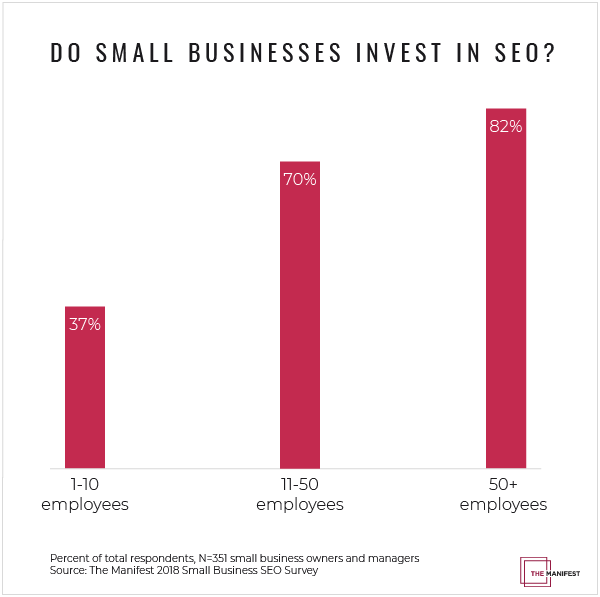
Brands that leverage mid-funnel keywords, including long-form keywords, in relevant content will benefit from added exposure while most go unseen.
How to Create Mid-Funnel Content
The evaluation stage is a pivot point. Based on the quality and availability of your content, leads will either move toward or away from your sales funnel.
To retain and engage your best leads, offer valuable mid-funnel content to distinguish your brand and persuade a customer to make a purchase.
